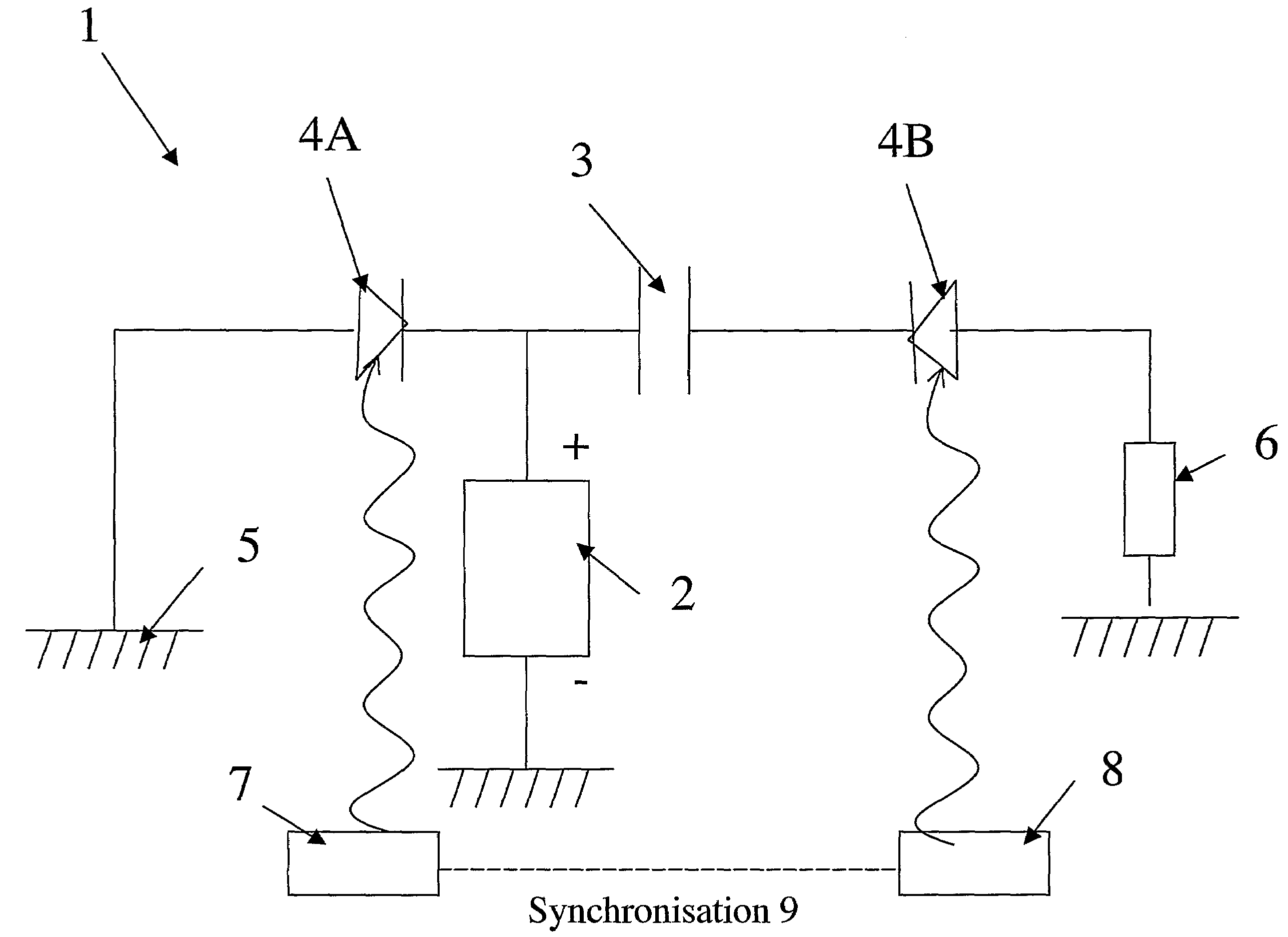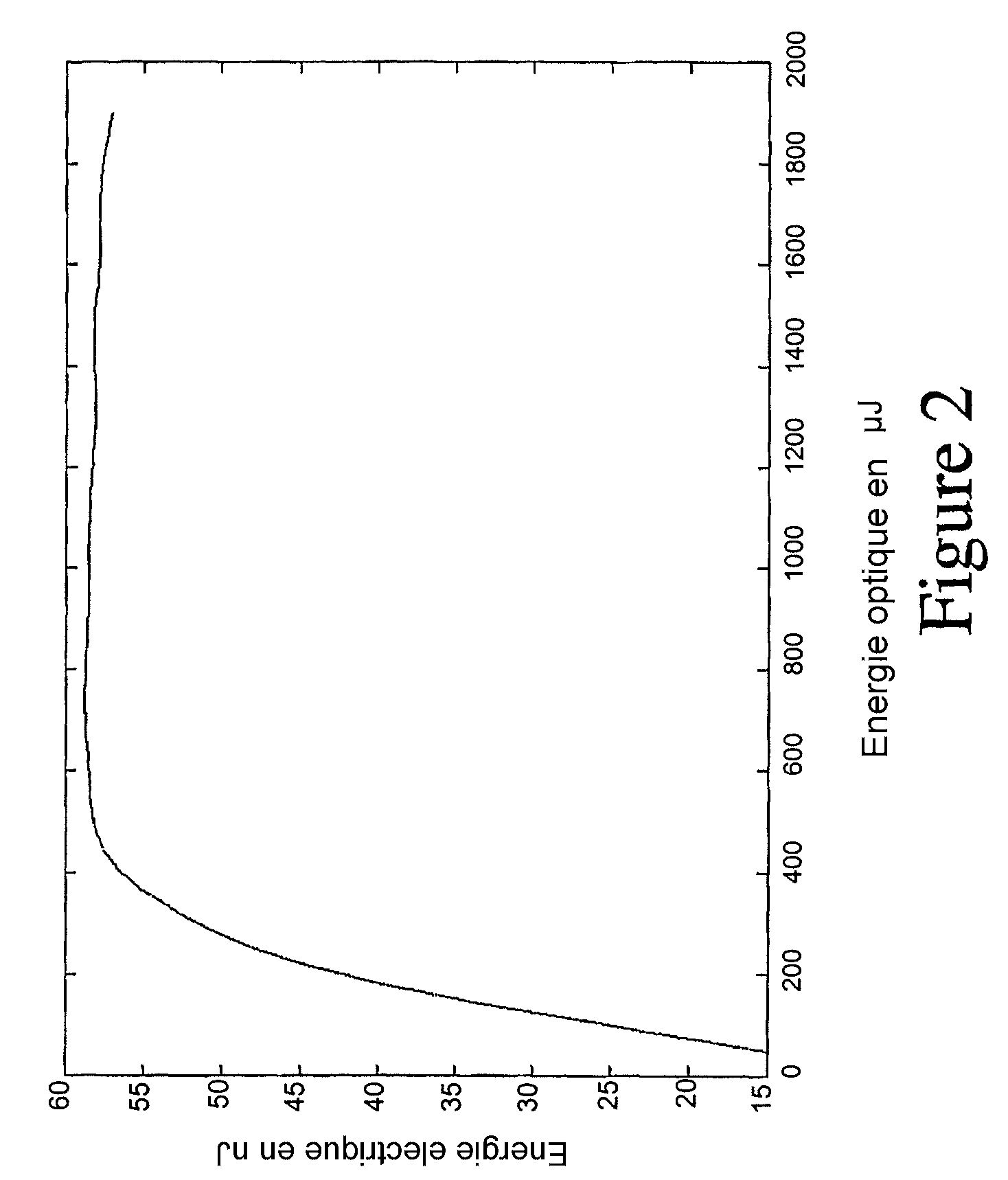High-power electric pulse generator
a generator and high-power technology, applied in the direction of pulse technique, generating/distributing signals, instruments, etc., can solve the problems of limiting the possibility of controlling the required, not being able to obtain, and high temporal jitter that is conventionally too great to synchronise short (subnanosecond) pulses, etc., to achieve fine control of the modulation spectrum, low temporal jitter, and high reproducibility
- Summary
- Abstract
- Description
- Claims
- Application Information
AI Technical Summary
Benefits of technology
Problems solved by technology
Method used
Image
Examples
Embodiment Construction
[0029]Illustrated in FIG. 1, the generator 1 comprises a high-voltage source 2 and a microwave transmission line forming a charge storage means 3. It also comprises two semiconductors 4A and 4B on each side of the transmission line 3. The first semiconductor 4A is connected to the reference of the potentials 5 and the second semiconductor is connected to a useful load 6. The semiconductors 4A and 4B are able to be excited by two light sources 7 and 8, which are coupled by a synchronisation means 9. This synchronisation means 9 makes it possible to control the delay of the laser emissions issuing from the sources 7 and 8. The sources 7 and 8 can consist of a laser source whose radiation is split into two or by two synchronous laser sources.
[0030]When the sources 7 and 8 do not illuminate the semiconductor components 4A and 4B, the latter have a high inherent resistance of several tens of Megohms, which can be considered to be open switches. After illumination by a brief optical pulse...
PUM
 Login to View More
Login to View More Abstract
Description
Claims
Application Information
 Login to View More
Login to View More - R&D
- Intellectual Property
- Life Sciences
- Materials
- Tech Scout
- Unparalleled Data Quality
- Higher Quality Content
- 60% Fewer Hallucinations
Browse by: Latest US Patents, China's latest patents, Technical Efficacy Thesaurus, Application Domain, Technology Topic, Popular Technical Reports.
© 2025 PatSnap. All rights reserved.Legal|Privacy policy|Modern Slavery Act Transparency Statement|Sitemap|About US| Contact US: help@patsnap.com



